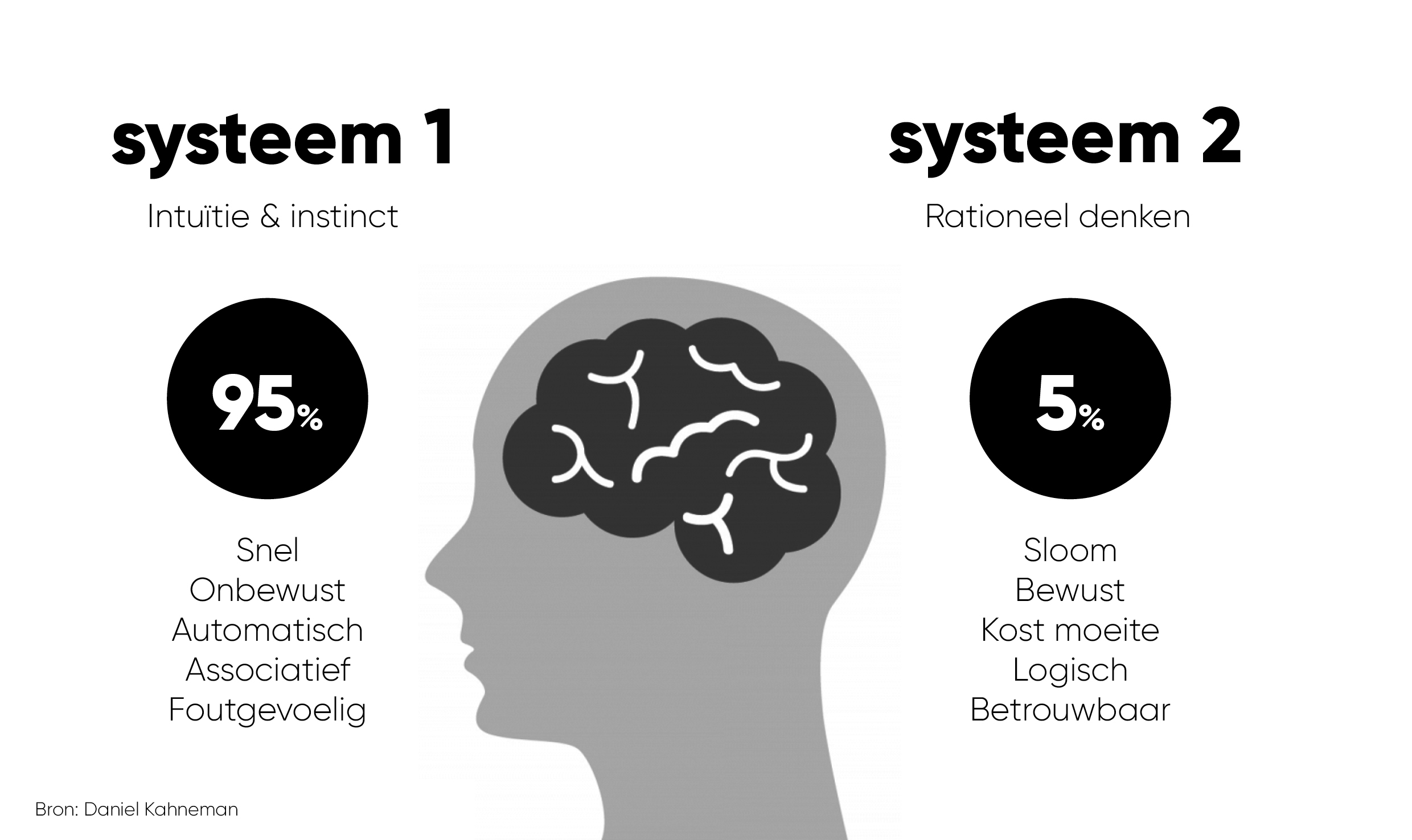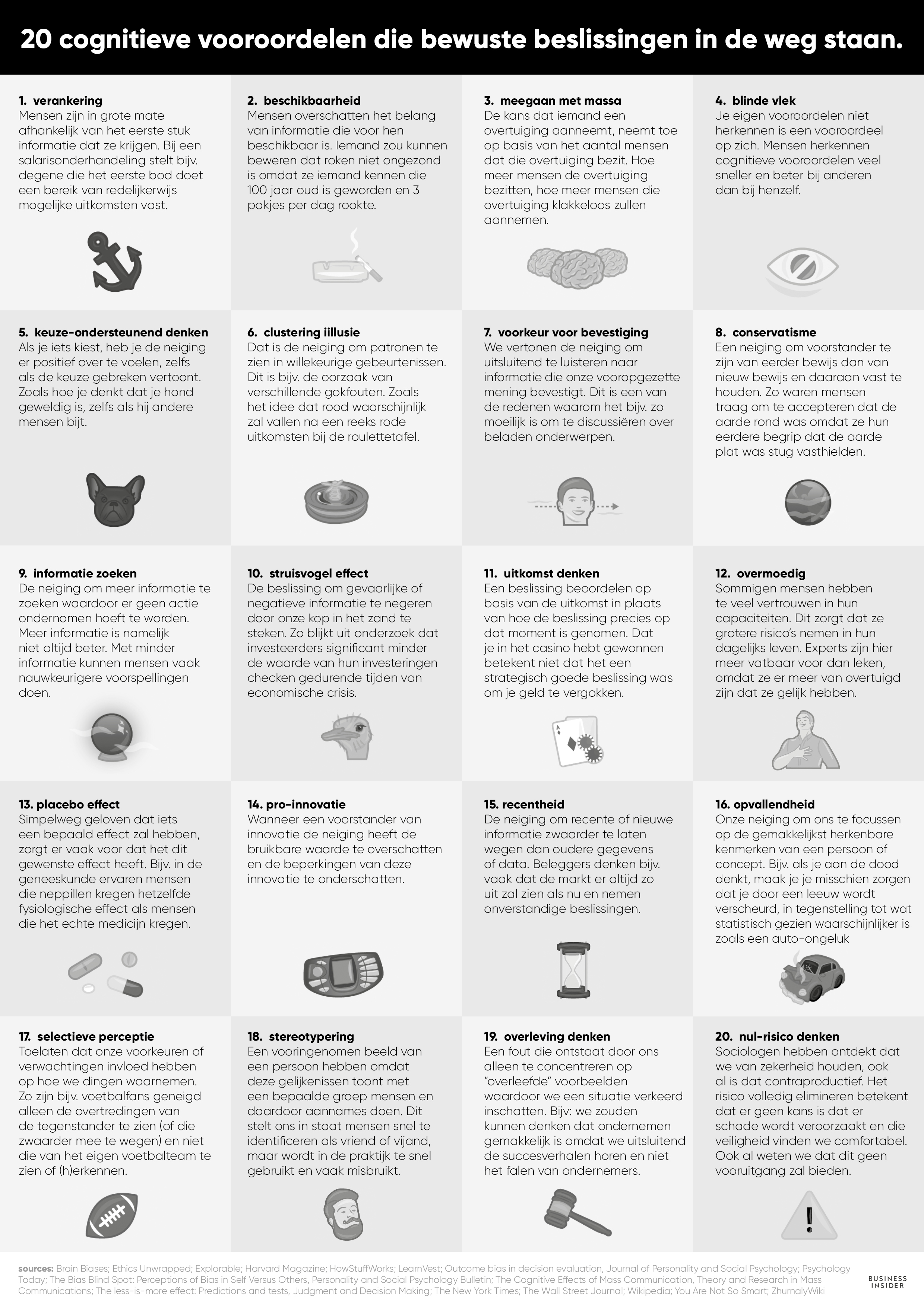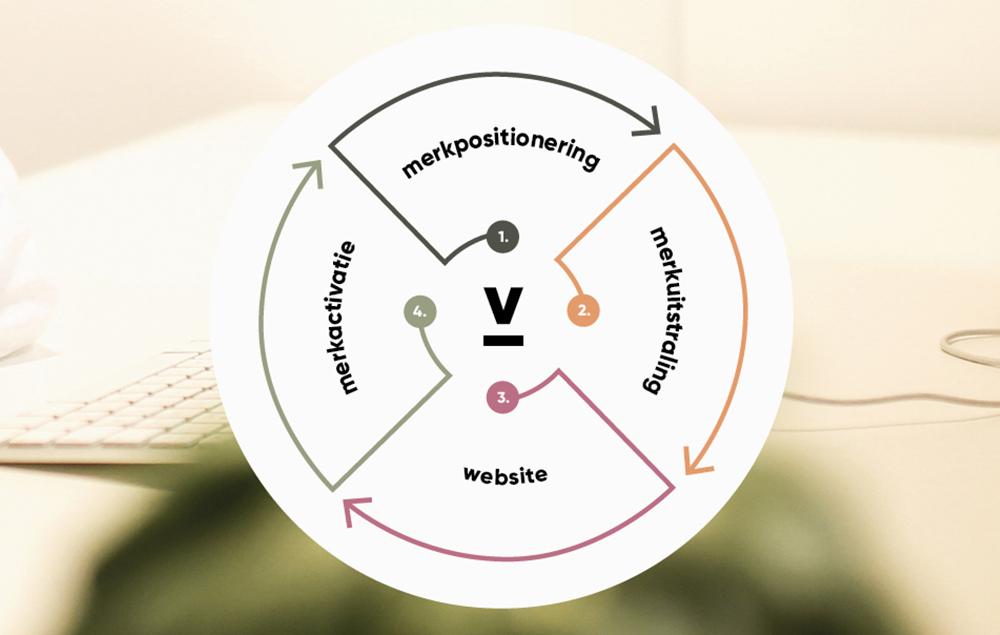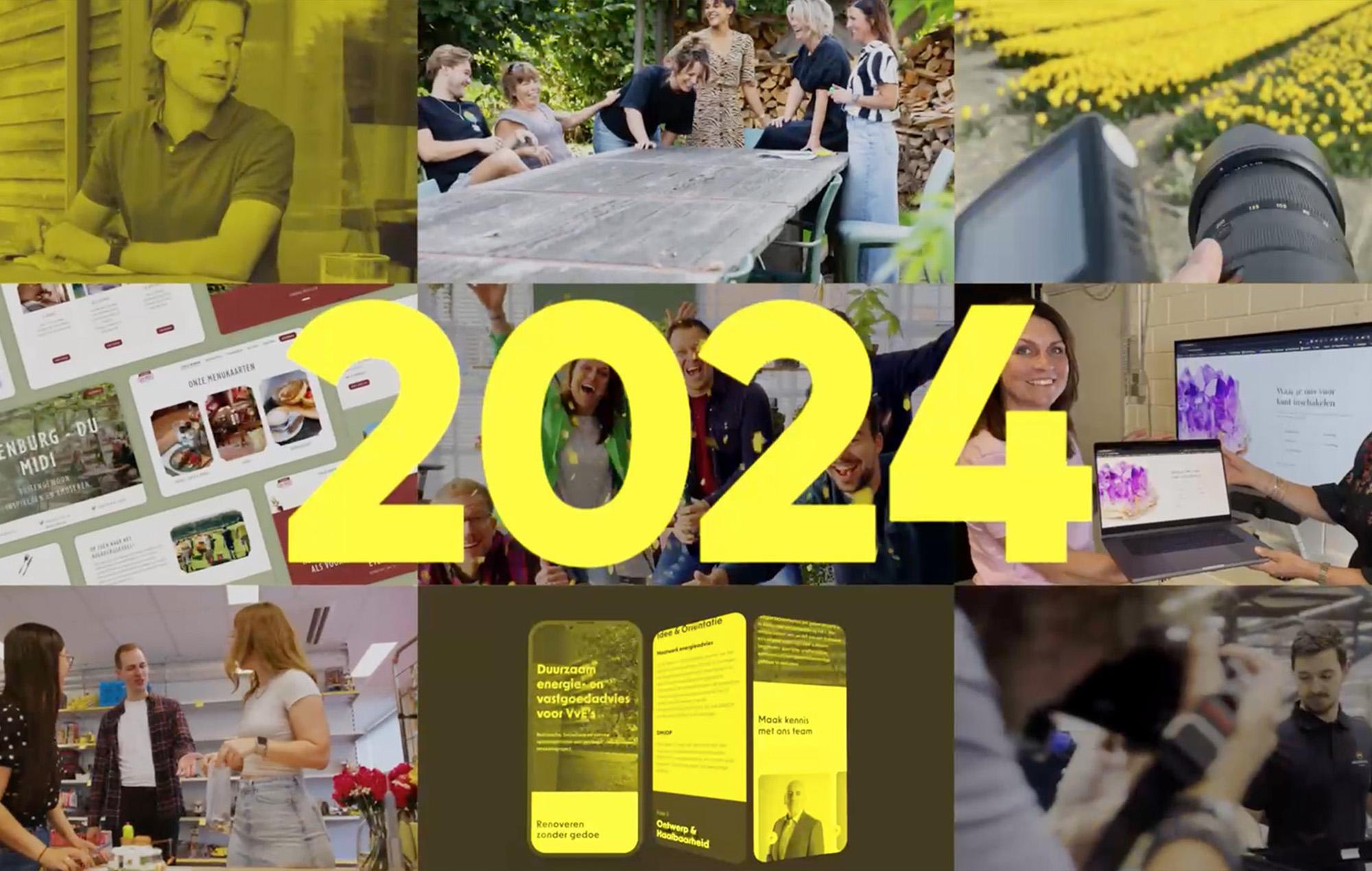-
 Dennis Damen / Brand Strategist
Dennis Damen / Brand Strategist
You read that right, 95 percent! How is it possible that we think we make conscious decisions all day, while these are largely unconscious decisions? For the answer to this question I was inspired by an article by Luke Theissling on Emerce and the book 'Thinking, Fast and Slow' by Nobel Prize winner Daniel Kahnemann.
act quickly and intuitively
A statement why we have the subconscious mind made decisions is due to the simple fact that making conscious decisions costs a lot of energy. In his book, Daniel Kahnemann perfectly describes how our brains are pre -programmed to be as lazy as possible. A person is confronted daily with more than 10,000 (micro) decisions! Far too energy and time-consuming to consciously think about everything. That is why we would like to make intuitive decisions. Fast and intuitive actions our ancestors helped to stay alive. Here is a tiger: danger! There is a pheasant: delicious! Those who had to think slowly and carefully to reach these conclusions did not survive to become our ancestors.
System 1 and System 2
In 'Thinking, Fast and Slow', Kahneman makes a distinction between two thinking systems: the fast system 1 ('Thinking Fast') and the slow system 2 ('Thinking Slow'). System 1 ensures that we make the vast majority of our daily decisions unconscious, intuitive and routine. System 2 helps us to make conscious, thoughtful decisions. A good example from practice is the following question: how many animals of each type of Moses took with him in his Ark? The Bible readers among us also probably answers: two of each type. They are next to it. Their mind, or system 2, is just a nap and system 1 gives the answer. When activated, System 2 would think: "You're fooling me, it's Noah's Ark and not Moses's." An example where system 2 is immediately activated are complex calculations (eg 23 x 27). There is no intuitive answer for this and our brains must work. Kahneman compares System 2 with a supporting character who thinks he is the protagonist, but is not aware of what is going on.

Recognizing unconscious choices
To better recognize unconscious choices, the 'cognitive biases' infographic from Business Insider at the bottom of this page is a good guide. In 1972, Kahneman introduced the 'Cognitive Bias' with his colleague Amos Tversky. This is a prejudice if we think we make a rational decision with system 2, while in reality it is an intuitive decision, made with system 1. In the infographic of Business Insider there are twenty of these cognitive prejudices. When you start recognizing the cognitive prejudices in yourself, you may be able to make conscious decisions of unconscious decisions.
Opportunities for Marketing
The fact that we make 95 percent of our decisions unknowingly offers marketers opportunities. A number of examples: we think wine with a higher price tag is better than the same wine with a lower price (more expensive is better). We choose ING as a bank, because many people in our area have also done that (approved by friends). And you choose your favorite toothpaste, because you always take it (we love certainty). When brands the power of repetition, the power of accessibility and the power of images, they create strong associations in the head of people. Associations that are only too happy to call on system 1 when making decisions. By not only making rational arguments for a purchase decision, but also getting the right associations in the head and hearts of people, you can realize (unconsciously) brand preference in the long term.
Amazing Brands. Proud People.
At Vandeez we are busy adding value to brands on a daily basis by getting the right associations in the head and heart of people. Curious about examples? View our cases .





























































Be inspired by our cases, insights and market trends.


